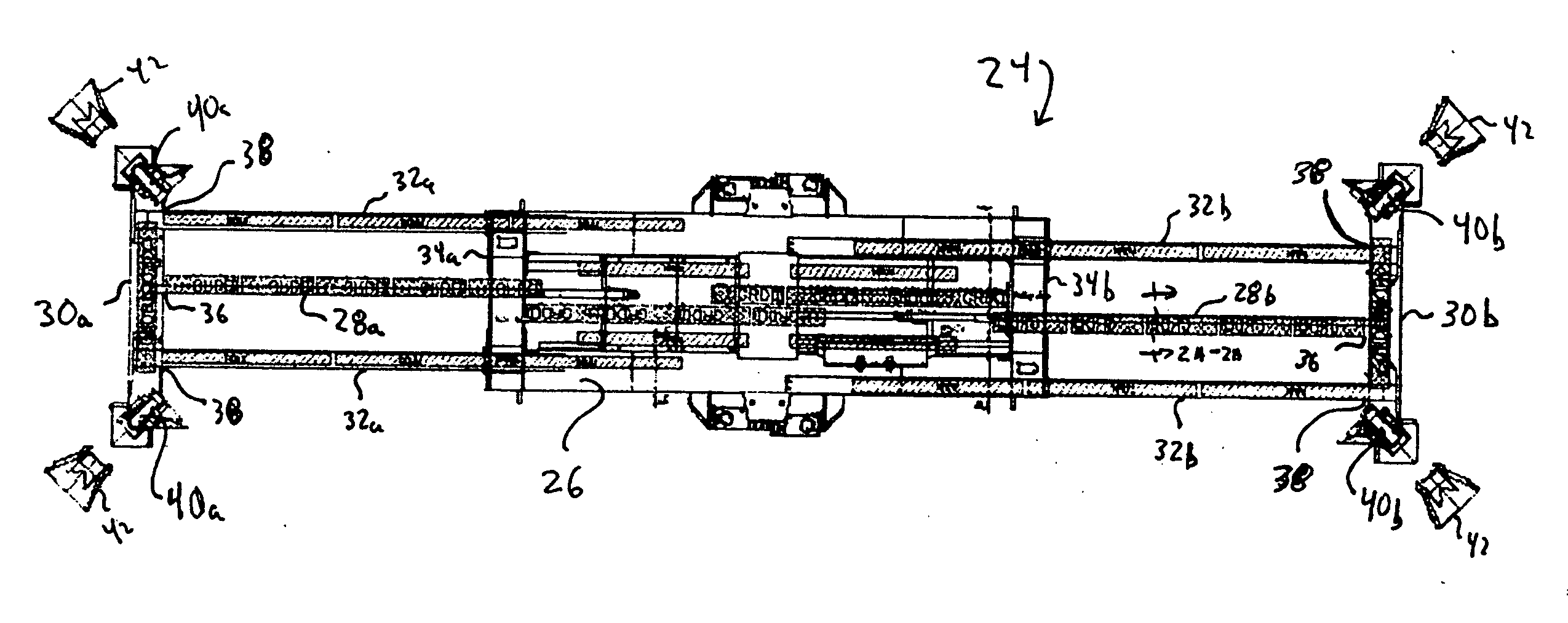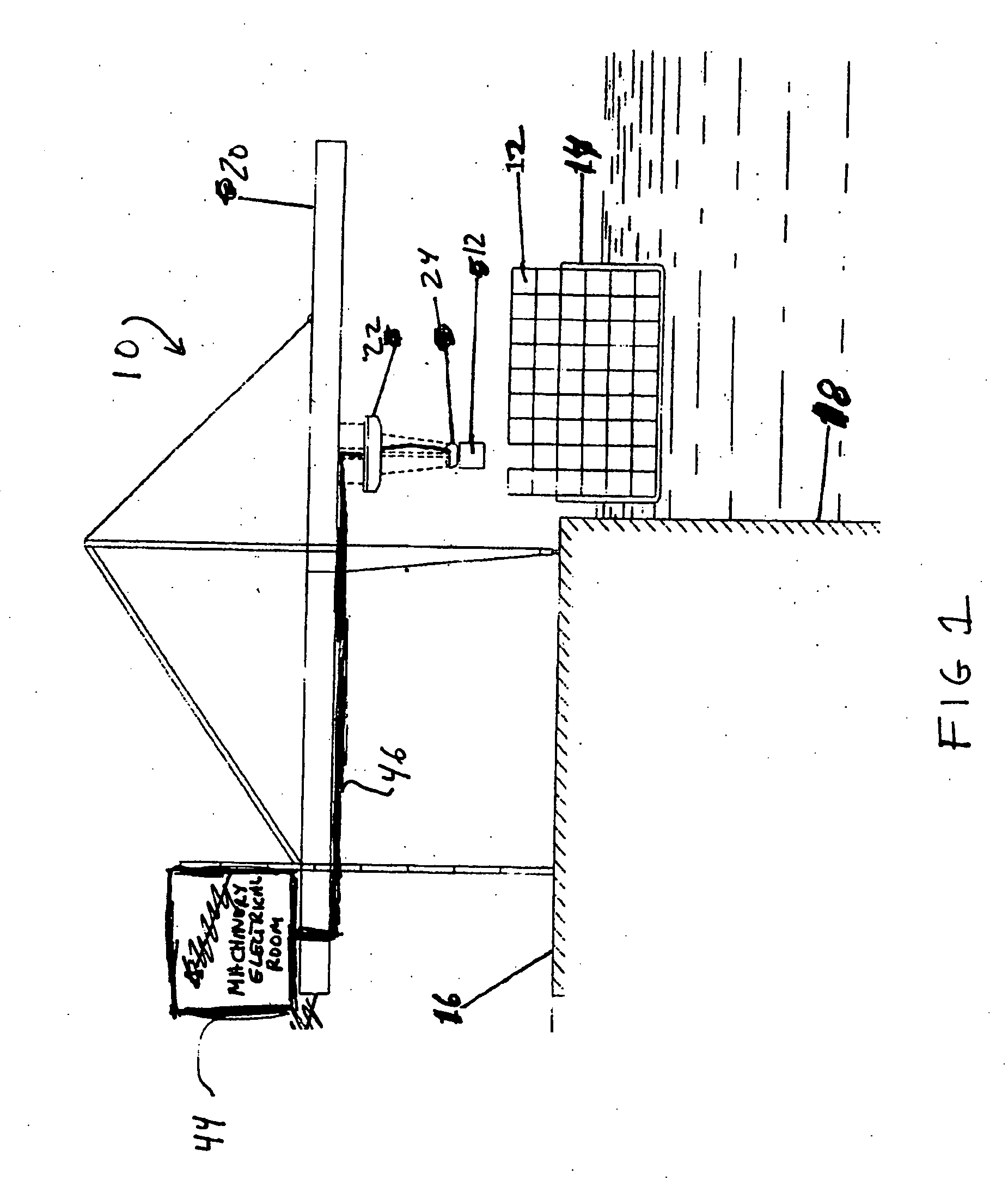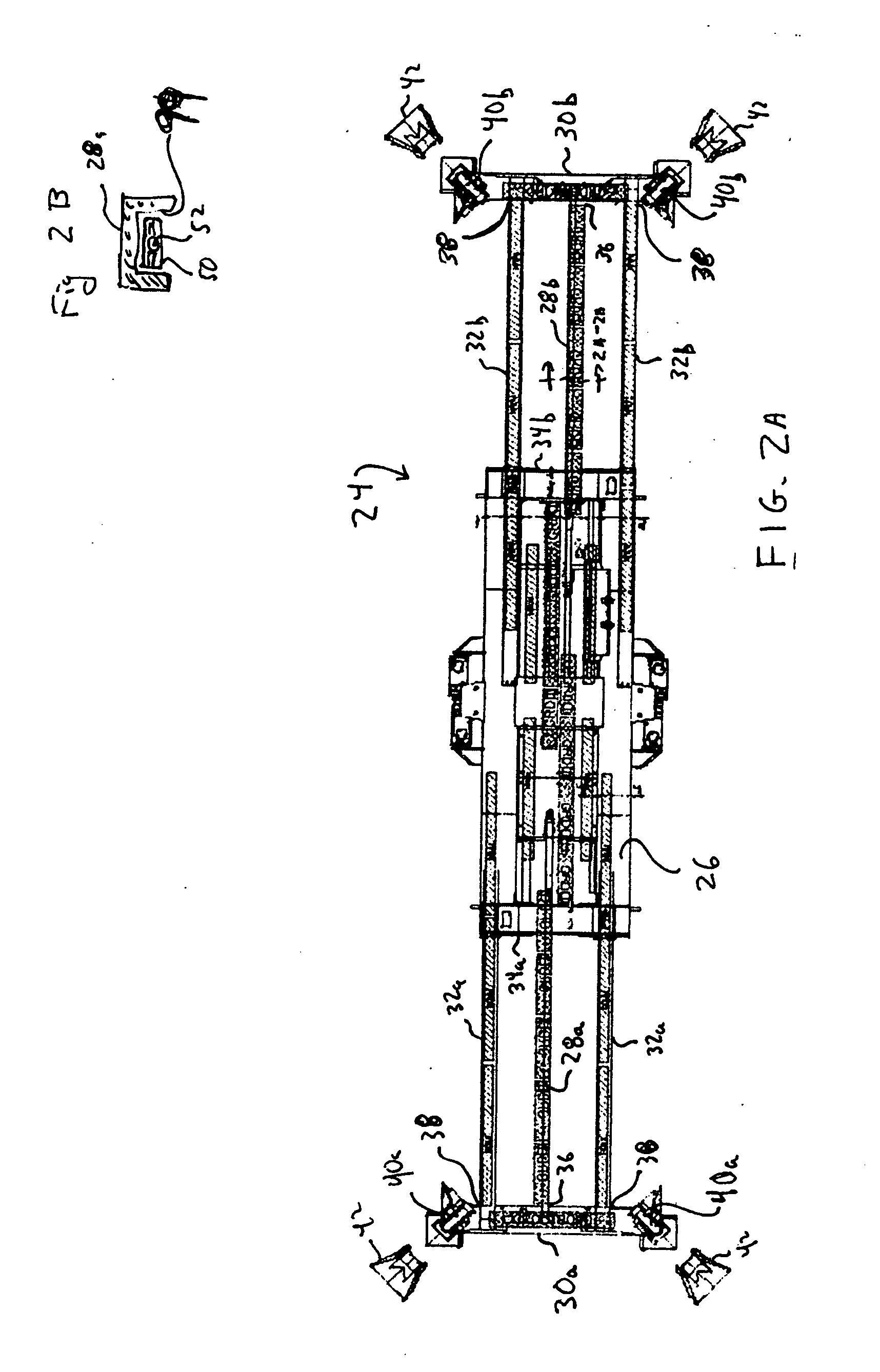Upon these aircraft being deliberately crashed into these structures, their fuel tanks explosively ruptured to disperse ignited
jet fuel resulting in the tragic loss of thousands of lives and total destruction of the World Trade Center Twin Towers.
In particular, a grave concern is that radioactive weapons, which spread
radioactive contamination over a relatively small area through conventional explosives, and nuclear weapons, which cause widespread destruction through the spontaneous release of high
fission or fusion energy from a nuclear core, may be surreptitiously smuggled from abroad in shipping containers and detonated at the port of entry, or later when the still sealed
shipping container has been transported by rail or
truck to a populated inland destination.
The
threat was further overshadowed by the more efficient long range bomber delivery and the later developed intercontinental
ballistic missile delivery systems for such weapons, which through multiple simultaneous launches could deliver an almost instantaneous fatal blow to one's
adversary.
Thus, nuclear warfare between the Cold War antagonists was not devised to be waged symmetrically in limited tit for tat engagements thereby ensuring that even the limited use of nuclear weapons was not a viable military option.
Moreover, the cells themselves may often be embedded in the very civilian populations they seek to terrorize.
Accordingly, the
threat of overwhelming retaliatory force is of little or no deterrent effect to the jihadist, thereby rendering the
threat asymmetrical.
For example, a coordinated jihadist
attack on just a few hubs of the global transport systems through the use of radioactive weapons, although not causing extensive
loss of life or physical damage to these and their related structures, would render these hubs unusable for several years through the spread of
radioactive contamination.
Major disruptions in the flow of international commerce would result from such an
attack, causing a global economic slowdown, if not global economic depression, thereby resulting in increased local and global political
instability.
However, one of the major problems of increased monitoring is that such monitoring may significantly
overburden and substantially slow the flow of commerce.
Terrorists are cognizant of the fact that just the threat of terror causes economic disruption.
Because goods move rapidly in global commerce, shipping containers have unfetteredly moved in and out of the seaports of the world with little or no inspection of their contents.
This lack of inspection and consequent risk of nuclear smuggling extends in even greater percentages to the some 300 million shipping containers that move in and out of the ports, and over the roads and rails, of the nations of the world every year.
However, it should be obvious that such large scale, invasive inspections are not economically feasible.
Such rigorous inspections would result in global shipping effectively
grinding to a halt because of the inability of shipping containers to pass through points of entry.
The aforementioned economic disruption and
instability would result from such inspections being rigorously carried out, thereby achieving the very goal of the terrorists without any weapon even being present.
Active systems and methods create a source of radiation which itself emits harmful radiation.
First, the source of radiation is carcinogenic and dangerous to the health and safety of workers who operate and work in the immediate area of the
system.
In June of 2005, the National Academy of Sciences issued a long awaited report on the biologic effects of
ionizing radiation entitled “BEIR: VII Health Risks from
Exposure to Low Levels of
Ionizing Radiation.” It states: “A comprehensive review of available biological and biophysical data supports a ‘linear-no-threshold’ (LNT)
risk model—that the risk of
cancer proceeds in a linear fashion at lower doses without a threshold and that the smallest
dose has the potential to cause a small increase in risk to humans.” Second, the operators of
active systems face long term legal liability
exposure much the same as
asbestos manufacturers did in the 1970s, 1980s and 1990s.
And third, organized labor and dock workers (longshoremen and teamsters) will often refuse to work around active radiation systems thus stopping the
work flow altogether.
Any additional operation that is performed during the movement of the container from shipper to consignee slows it down and creates inefficiency.
But this rapid movement creates a plain and serious security risk.
Contrary to the disclosures of the '421, '944 and '235 patents, highly placed, U.S. Government officials have stated that crane-mounted radiation detection “does not work” because the sensors cannot be sufficiently shock absorbed.
During each of these actions, the hoist attachment is subject to
impact, shock and vibrations from the forces of collisions that occur.
Additionally, the accelerative forces during the loading and unloading process of the container place stresses and strains on the hoist attachment when it is twistlocked onto the container.
It has been found that this energy may be disruptive to the normal operation of the radiation sensors and may further cause their failure.
In the event a container does contain a radioactive weapon or nuclear device that is triggered to detonate upon reaching a destination port with the intent of disabling such port, the detection systems of the '421, '944 and '235 patents, if employed only at the destination port, may not provide
sufficient time to prevent the disaster from occurring should the threat be detected.
Furthermore, the threat may have already been realized from
detonation while the container containing the threat is still onboard the container ship prior to being scanned.
However,
origination ports may be in countries that are hostile to the interest of the nation of the destination port, or even if each country has nominally friendly relations, the port employees may be infiltrated by terrorists or their sympathizers.
Although, the country of the originating port may acquiesce to detection systems being installed at their ports for scanning of all outgoing containers through action of international treaties and protocols, the country of the originating port may not welcome or allow foreign inspection monitors to be present.
Thus the possibility exists that the port employees of such country could compromise the scanning process and falsify the scan results to enable a container with threat materials to be loaded onto the ship.
 Login to View More
Login to View More  Login to View More
Login to View More 


